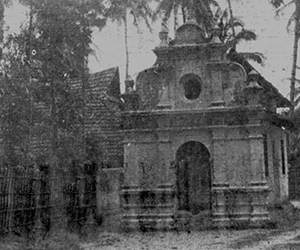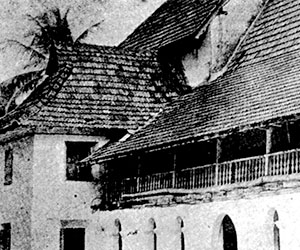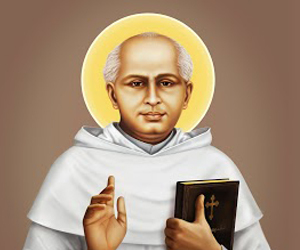HISTORICAL IMPORTANCE

It is traditionally believed that in AD 52, The Cross that St. Thomas erected at Kokkamangalam , not far from here,
happened to be thrown away into the Vembanad Lake by fanatics. But the cross safely floated over the surface
of the lake and reached “Mattel” a small island, adjacent to Pallipuram.
The Hindu women, who went to the island to cut grass for their domestic animals, inadvertently struck the Cross
with a sickle; the Cross started bleeding. Afraid and not knowing the significance of the unusual artifact,
they reverently carried the Cross to the main land, and entrusted it to a Christian family there.
The Christians built a small thatched hut to house the Cross, about a hundred meters to the west from the bank of
the backwaters. The filial Church of the Holy Cross, called Kurisupura [ The House of the Cross]. The miraculously
found cross was solemnly kept in this small Church to commemorate the event.
When the community grew larger, they decided to build a bigger church in another five hundred meters to the west,
where the present St. Mary’s Forane Church stands.In later years the cross was taken over to Pallippuram Church
and it is preserved there today


The current main alter keeps continuing the Portuguese style architecture in its front side
where as the the church is firstly renovated in AD 500 . The facade of the Church was built under
European influence in the sixteenth century and stands to this day.
The main altar at the Church is remarkably baroque nature and shows European influences. The Pallippuram Church
is the maternal church of most churches in Northern Travancore and Southern Cochin.
Palackal Thoma Malpan lies buried at the right side of the main alter and Mgr. Raphael de Figueredo Salgado,
Vicar-Apostolic of Verapoly on 12 Oct, 1695 buried at the left side of the main alter.
At Pallippuram there was a seminary, for the training of the Syrian clerics, the remnants of which
can be seen even today. Some of the ancient paintings about Our Lady’s Assumption are of great attraction
for visitors to this place. Stone carvings and ‘Taliyola’ writings are saved in the church.
The seminary was founded by Palackal Thoma Malpan in 1818. There were several acolytes desirous of studying for
priesthood under him. Mangalath Chandy was the first student and Chavara Kuriakose of Kainakary was among the first to
join in the seminary at the age of 13. The Malpan brought him up as if he were a son and considered him the spiritual heir.
Seeking to bring order to the seminary, he wrote a regula for the seminarians, following it himself more stringently than all else.
Even otherwise, he had kept an austere routine and diet from his early years.

St. Kuriakose Eliase served in this church as a priest for some years.
